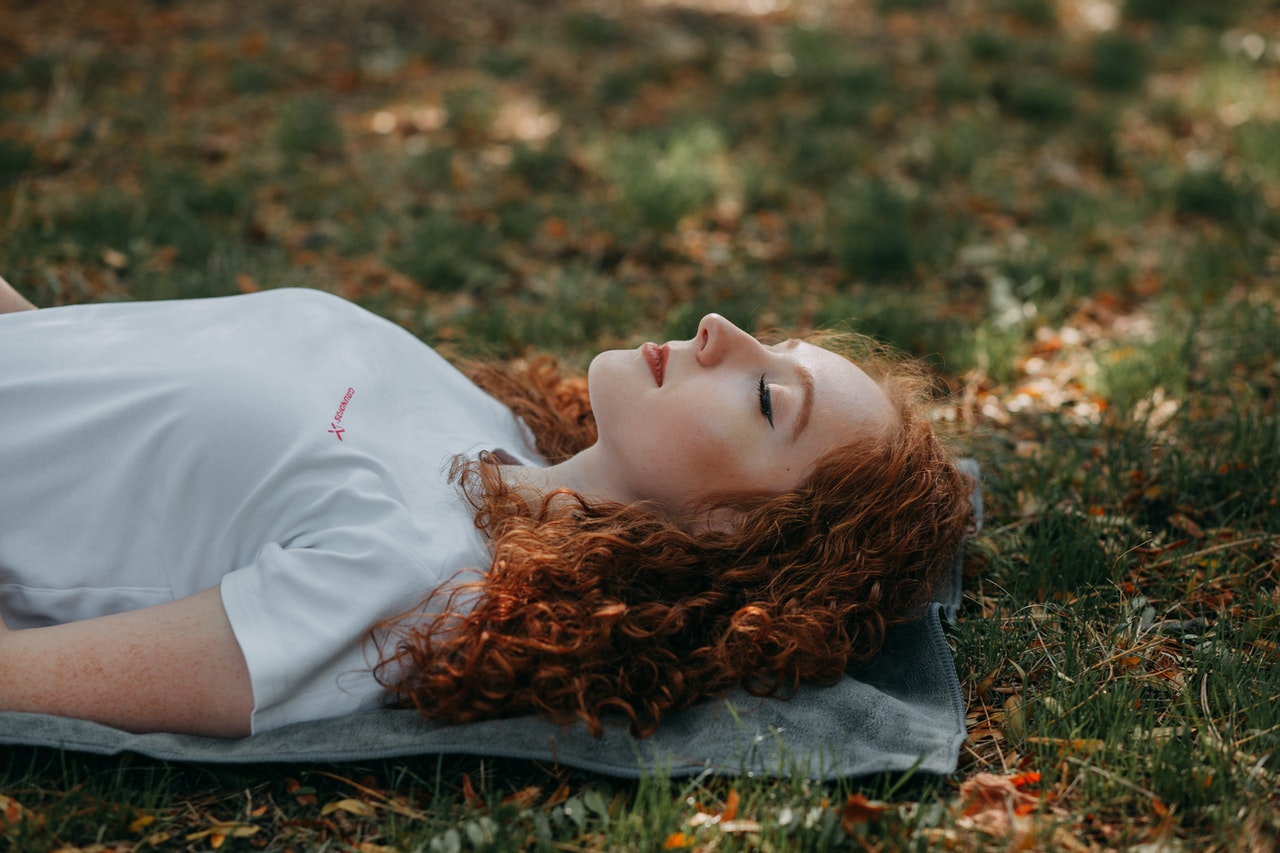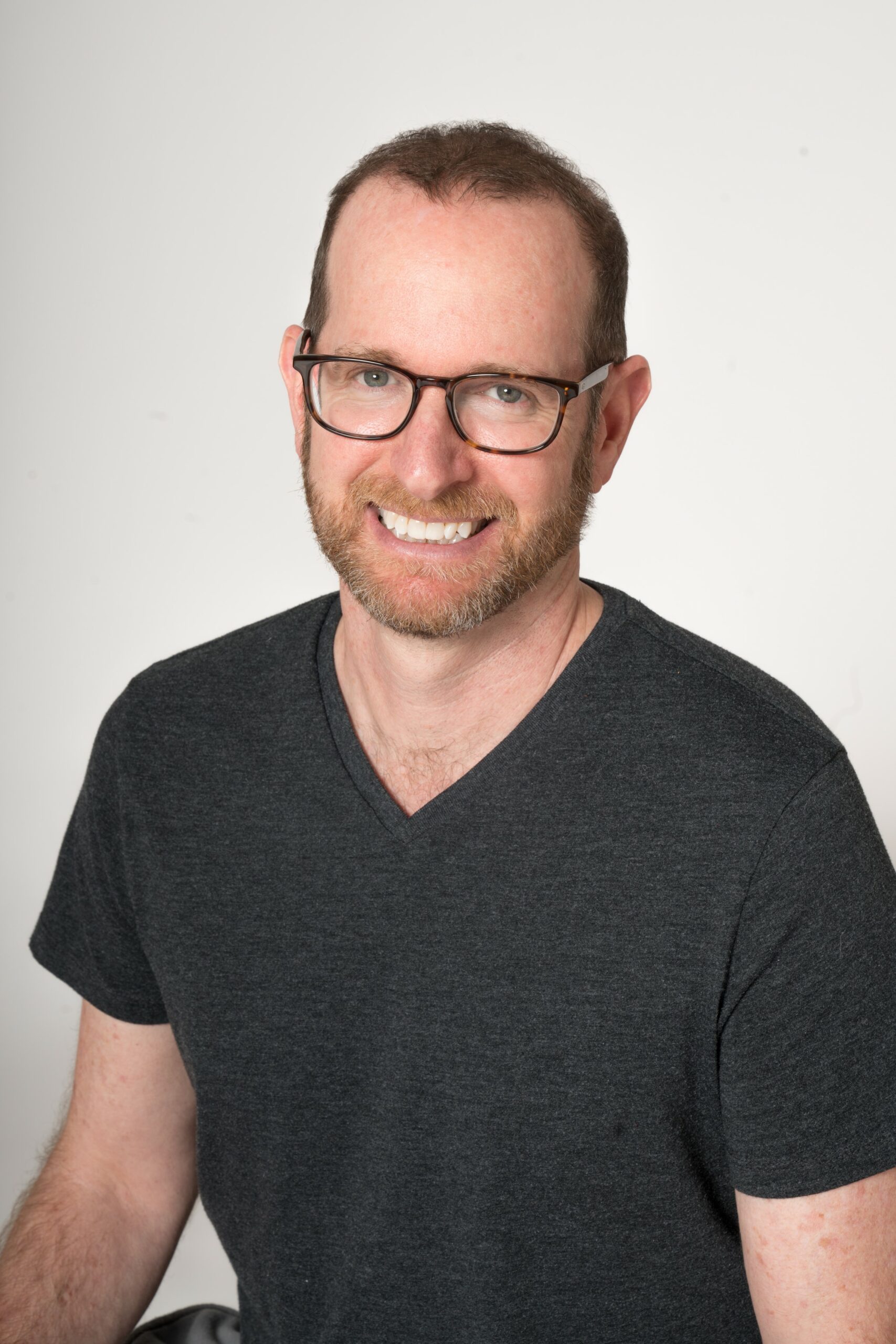Honestly, a bigger problem was that having anxiety made me feel like a failure as a yoga practitioner and teacher. How could I have anxiety if the focus of my life has been learning to calm my nervous system and control my mind?
I’ve been using yoga to help me handle mild anxiety for my entire adult life, and it has been incredibly effective. But three years ago, just a few months after my mother’s death, I had a severe anxiety attack. I ended up in the emergency room since I didn’t know what was happening to me.
After hours of waiting and a whole bunch of tests, I remember the two emergency room doctors coming to talk to me. The one in charge said, “We can’t find any physical cause for your symptoms, and we think it might be an anxiety attack.” I laughed out loud and said, “That can’t be right. I’m a yoga teacher!”
For the longest time after that, I couldn’t bring myself to accept the fact that I have severe anxiety. I had kept up a regular yoga and meditation practice for thirty years, and I spent time every day calming my nervous system and working with my mind. But I couldn’t deny what had happened. For a while, my practice became very difficult. What had once been a sanctuary started to feel like an alien world.
I know that yoga has been proven to support people with anxiety, but it took me a while to find my way back to a formal practice. Looking back, I can see that one positive outcome is that my experience gave me so much compassion for the resistance I had seen in my students over the years. All of a sudden, I completely understood how difficult it could be to turn within, and why the subtle practices of pranayama (breathing practices) and meditation are particularly challenging. I was a beginner again.
Luckily, I haven’t had another anxiety attack like that one, although the fear still lingers. Since then, my practice has evolved in so many ways. Most of all, I’ve let go of the striving that came out of wanting to be a “good” yoga student. Now, I spend time every day with myself, but not always in the kind of formal practice that I used to require of myself. I move and find stillness in more spontaneous ways that support my mental and physical health in the moment. Sometimes I dance around the room and sometimes I lift weights and then do some asana and relaxation.
One of the things that helped me with my anxiety was the support of an amazing yoga therapist who allowed me to be a student again. I had fallen into a trap that is so common for teachers: we forget to keep learning. We think we know enough and stop there. I’m not going to go as far as to say that I’m grateful for my anxiety, because that is clichéd nonsense. I’ve tried to engage with my anxiety to expand the way I conceive
of, and relate to, my own mind. I accept that fear, worry—and even panic—are normal parts of my humanity. I don’t need to run away from those painful feelings toward some mystical idea of peace, which is what I was doing before.
Honestly, a bigger problem was that having anxiety made me feel like a failure as a yoga practitioner and teacher. How could I have anxiety if the focus of my life has been learning to calm my nervous system and control my mind? Well, I think the answer lies in the latter part of that statement: controlling the mind is a dangerous game. Since my anxiety attack, I’ve been exploring new ways to approach my mind with kindness, and a new understanding of what I need. Instead of controlling my mind, I’m working on repairing my relationship with myself. Kabir describes it well:
THE FAILURE by Kabir
I talk to my inner lover, and I say, why such rush?
We sense that there is some sort of spirit that loves birds and
animals and the ants—
perhaps the same one who gave a radiance to you in your
mother’s womb.
Is it logical you would be walking around entirely orphaned now?
The truth is you turned away yourself,
and decided to go into the dark alone.
Now you are tangled up in others, and have forgotten what you
once knew,
and that’s why everything you do has some weird failure in it.
I love Kabir’s premise that, “you turned away yourself . . . and that’s why everything you do has some weird failure in it.” He gets right to the heart of the issue of identifying with ego-mind instead of spirit. I also love the idea of normalizing failure. Isn’t that what it means to be human? Isn’t life a succession of failures that we learn from? How can you learn if you don’t fail?
Failure is the direct outcome of practice. Failure is what we get to do every time we get on the mat. We get to fail at this pose or that pose. We get to fail at relaxing when we lie in Shavasana and our nervous system is buzzing with caffeine, and we get to fail at meditating every time our mind wanders. I’ve never practiced yoga and not failed, and that’s exactly the point.
Failure is the key to yoga. It’s like that expression, “the broken place is where the light shines through.” The failure is where the light of yoga shines through to expose our most tender places—our wounds. It illuminates the limits of the body and mind, not so we can overcome them through sheer force, but so we can love them more. How else can we become whole (healed) without completely embracing our mistakes and our failures?
If we don’t accept failure, we live in an imaginary bubble of our ego-centered imagination. We deny anything that goes against our self-image; we create “alternate truths.” The first step in social justice and equity work is identifying our shortcomings. We need to admit to our prejudices, our unconscious bias, and our mistakes. We need to clearly see our failures so we can do better. But how can we see them if we are constantly defending ourselves, no matter how many mistakes we make and how
many people we harm?
We can learn how to fail in public by apologizing for our mistakes. If I make a social media post that is offensive or incorrect, I can either defend my position over and over in angry comments, or I can say, “I was wrong, and I’m sorry.” As Maya Angelou famously said, “I did then what I knew how to do. Now that I know better, I do better.” There is tremendous wisdom in that simple statement.
Yes, yoga practice is a journey to self-love, but not in an egotistical way. This is where we so often get it wrong. It’s about loving our differences instead of hiding them, celebrating our limitations instead of denying them, and literally investing in our failures. By embracing failure, we integrate our humanity and our spirituality. Rather than dance between them, we can love our limited human body and mind as fascinating expressions of our spirit, and appreciate how essential they are to our journey.
Failure reminds us that complete identification with the body-mind is unhealthy, and that we haven’t been “orphaned” here, as Kabir describes. Our spirit isn’t separate from this human experience, rather it’s the glue holding it all together. There is no part of us that is not connected to spirit, even the ugly, dirty, and painful parts. And the way to experience spirit isn’t by denying the ugly parts, but by loving the most orphaned parts of ourselves more.
Reflection: Can you think of an experience in your life that felt like a failure, but in the end was actually a kind of success?
Excerpted with permission. For more information visit Yoga Revolution.
Jivana Heyman, C-IAYT, E-RYT500, is the founder and director of the Accessible Yoga Association, an international non-profit organization dedicated to increasing access to the yoga teachings. Accessible Yoga offers Conferences, Community Forums, a Podcast, and a popular Ambassador program. He’s the co-founder of the Accessible Yoga Training School, and the author of Accessible Yoga: Poses and Practices for Every Body, as well as the forthcoming book, Yoga Revolution: Building a Practice of Courage & Compassion. More info at jivanaheyman.com











